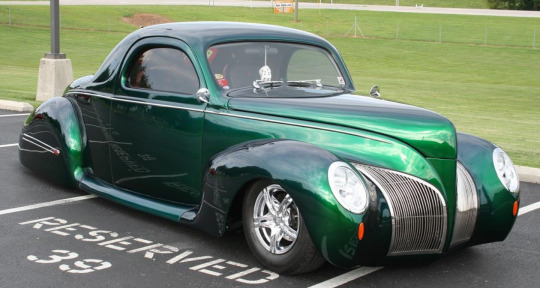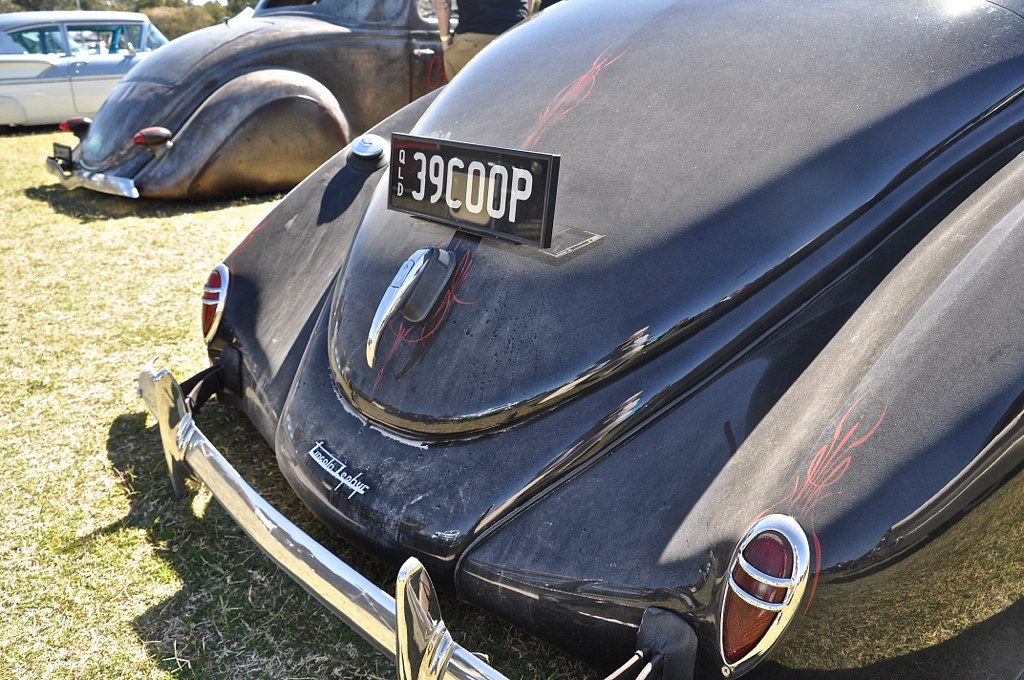#39 zephyr coupe
Text
Rollin Out to Lone Star Round Up 2023. Zephyr, Chevy, Packard, Ford, Mercury. Los CoChinos CC.
#classic car#vintage cars#custom car#antique car#kustom#los cochinos cc#praise the lowered#kustom kulture#loscochinos#taildragger#39 zephyr coupe#39zephyr#36 ford 5 window#36 packard roadster#50 chevy#39 mercury coupe#lonestarroundup#lone star round up#lsru2023#zephyr#Mercury#Packard#ford#Chevy#south austin#austin texas#austin tx#texas#Austin
59 notes
·
View notes
Photo

Starring: ‘39 Lincoln Zephyr Coupe
By eduardo lopes
124 notes
·
View notes
Video
Low and dusty by sccart
Via Flickr:
Two classic tails , the 39 Lincoln Zephyr and the 36 Ford coupe GreazeFest Brisbane
17 notes
·
View notes
Text
Celebrating the Anniversary of the Ford Model A at 2019 Grand National Roadster Show
Most Deluxe readers are familiar with the Grand National Roadster Show and its iconic America’s Most Beautiful Roadster award. While the AMBR contenders usually get the most attention, for the last dozen years the GNRS has also devoted a hall to exhibits with a specific theme. This show-within-a-show started in 2007 with the Deuce’s 75th Anniversary, undoubtedly a highlight in the show’s nearly seven-decade history. Many others have followed since, such as Customs Then and Now, Tribute to the Bonneville Salt Flats, and last year’s muscle car display. For 2019, Building No. 9 was solely devoted to 1928-1931 Ford automobiles, aka the Model A.
The unjudged exhibition, sponsored by C.W. Moss Ford Parts, was the brainstorm of Brian Bauer and Karpo Murkijanian, two individuals well-known in our scene. Brian has owned his street-driven A roadster since the 1970s, a survivor that competed in the first NHRA Nationals at Great Bend, Kansas, in 1955, before setting numerous track records, including at Lions. Karpo has the same affinity for drag race history, having restored the Mondello & Matsubara AA/Fuel Altered Fiat Topolino with Pete Eastwood, as it looked 50 years ago.
Brian and Karpo worked up an extensive list of potential guests, which they combined to create the most impressive group of Model As ever assembled. The job wasn’t easy by any stretch, since they had to track down owners of some of their wish-list cars. Though they could not locate all of them, they didn’t have to worry about filling any empty spots considering their long waiting list. Ultimately, they had 107 spots available, and 107 cars showed up. The place oozed with hot rod history, from past AMBR winners to magazine cover cars. It was a sight to behold.
Model As far as the eye can see, representing the various versions offered by Ford between late 1927 and the end of 1931. With close to 5 million produced worldwide, no wonder the car has become a hot rod favorite to this day.
Entering the hall, visitors were greeted by a group of former AMBR champions. Many will recognize the Bill NieKamp blue roadster, which won the first competition in 1950. But who remembers its neighbor? Jerry Woodward built and still owns the Thunder Rod, which has not changed much since its AMBR victory in 1957, though he added the supercharger later.
Based on a ’29 roadster channeled 5 inches, Chuck Krikorian’s Emperor won the AMBR competition in 1960, with help from George Barris. Among the unique touches, note the nose piece by Barris Kustom and the 406ci ’57 Cadillac V8 with six carbs. The Gejeian family currently owns this piece of show-car history.
Drag racing enthusiasts associate Rich Guasco with the famous Pure Hell, a nasty roadster that he drove to many Fuel Altered victories during the 1960s. He also owns a piece of hot rodding history in the shape of this Model A, which he started driving it at age 13 in the 1950s. It won the AMBR competition in 1961 and graced the covers of Speed Mechanics, Mar. 1958, and HRD, May 2013.
Next to Guasco’s roadster is John Corno’s AMBR winner, which Russ Meeks built with a tilt body (lengthened 4 inches) that covered a ’68 Olds Toronado V8. More alterations came in 1986, such as the hand-built stainless steel chassis. Oregon residents Roman and Judy Baszniak currently own the famous roadster.
Bill Grant impressed the crowd with his ’28 roadster, aka the Muroc Roadster, when he and builders Terry and David Stoker entered the 2017 AMBR field. To the surprise of many, it retains stock (but mega-detailed) mechanical brakes, together with a seriously hopped-up ’32 Model B engine. It now comes equipped with a vintage Miller overhead conversion and Zephyr intake manifold. The car’s full story was in our July 2017 issue.
Galpin Speed Shop displayed the Bill Likes ’29 roadster, also known as the Edelbrock Special. Bill worked as Edelbrock’s shop manager during the postwar years. Back in 1951, the dry-lake-prepped Model A on a ’32 frame posted a speed of 153 mph in the B class.
Tom Lieb is the owner of Scat Enterprises, which has been specializing in aftermarket crankshafts for decades. He bought his well-known ’29 roadster in 1958. He had Pete Chapouris’ So-Cal Speed Shop redo the car in 2007, featuring a cab stretched 3 inches, and entered the AMBR battle with help from Jimmy Shine in 2016. Motivation comes from a ’49 59AB flathead.
Building 9 housed a bunch of recently built hot rods taking clues from our scene’s early days. Take Rudi Hillebrand’s red ’31 coupe for instance. It runs a 268ci ’50 Ford flathead V8 fitted with Navarro heads and an Eddie Meyer Hollywood intake manifold. Next to it sits the mildly chopped coupe owned by Mike Herman of H&H fame, which gained some oomph courtesy of a McCulloch supercharger.
Burbank Choppers Car Club member Verne Hammond unearthed quite a survivor during one of his numerous visits to the Pomona Swap Meet, in the shape of the Ken Blackwell Street Jewel built in 1958-1959. Based on a ’29 roadster, it appeared among a few other cars on the cover of HOT ROD, Nov. 1961. The Olds-powered roadster was a cover car again in our Nov. 2014 issue (“Street Jewel Shines Again”).
Note the unusual front fender treatment on Rob Dehoney’s ’29 roadster. Rob belonged to a group of young fellas who hill climbed in San Francisco in the 1930s, and the car has remained in the same family since. Other uncommon characteristics include late ’30s Plymouth bumpers and grille, plus an Auburn windshield and dash.
The Tom Morris ’29 roadster was built in 1948, then raced at the dry lakes and dragstrips, before being parked in 1955. This jalopy is the real deal, with its ’48 Ford flathead, ’40 Ford trans, Tom Morris-made cast quick-change rear, and Crestliner steering wheel. Incidentally, it ran 110 mph at Bonneville in 1953 in the C Roadster class. Our cover story on the car, “Renaissance Man,” ran in the Nov. 2018 issue.
Jay Dean of Nostalgia Ranch in California had two of his hot rods on exhibit at GNRS, a trophy-winning ’32 five-window coupe shown in the Suede Palace and this neat ’28 Model A painted ’32 Alfa Romeo Red. Sitting on a custom frame, the chopped and channeled roadster relies on a 365-horse 327ci GM engine.
Although it never appeared in the TV show, they call it the Dragnet Roadster because Jack Webb posed in the company of the vehicle, then owned by Tom Pollard, on a HOT ROD cover in 1955. Richard Loe is the current caretaker of the relic. It hasn’t changed much since its flamed 1968 repaint.
Longtime lake racer Jim Travis broke a couple of records at Bonneville with his ’29 roadster, specifically 124 mph in X/GR (1969) and 113 mph in X/STR (1970). And yes, the L.A. Roadsters club member still owns the car today, which he drove daily for years. The triple-carbed 297ci ’48 Merc engine received a Clay Smith cam. Behind it reside a ’39 Ford trans and a ’48 Ford rearend.
Billy Crewl became good friends with Jack Calori, who owned a distinctive Model A recognizable thanks to its two-piece windshield and upswept exhaust pipes. This relationship led Billy to create a tribute of the roadster in question, seen here. It uses a ’28 body bolted to a ’32 Ford chassis, a ’46 Merc motor, and a deep, owner-applied black paint job.
Many people had their eyes on James Bobowski’s ’29 roadster from New Jersey when he entered the 2018 AMBR competition. Originally built by the Ayala Brothers at Gil’s Auto Body in 1950, the now restored roadster did not win. Interestingly, it had already gained recognition in the 1950s, having raced at the Bonneville Nationals (1951) and having appeared in Hop Up magazine (1952) as well as the movie The Lively Set.
Clark Crump put his Model A coupe on exhibit in the Four Ever Four Cylinder Club booth. Bob Kehoe, a respected Bonneville 200 MPH Club member, owned the vehicle for years. He bought it as a stocker in 1998 before hopping up the four-banger with an overhead conversion.
John Mumford has amassed an amazing collection of hot rods and customs over the years, such as Sam Barris’ ’49 Merc and the Ala Kart, seen in these pages as well. Add to the list this ’29 pickup with ’49 Cad V8 power, which was featured in HOT ROD, Apr. 1962, when the car was owned by David Dias. Great stance can be attributed in part to the frame being kicked up 5 1/2 inches at the rear.
Jim Jacobs created quite a commotion when he brush-painted his ’28 phaeton with friends during a 1987 Goodguys event. The car then shared the cover of Rod & Custom (Dec. 1988) with Pete Chapouris’ ’32 roadster known as Limefire. That red paint is still on the unrestored body today, though it has since been plastered with old cut-up HRM articles.
East Bay Speed & Custom beautifully handled the restoration of Mickey Himsl’s ’29 truck, which he has owned since the early 1960s. Some might even argue it’s better now, with additional chrome and details. It goes down the road courtesy of a 265ci ’48 Ford 59AB flathead mated to a ’39 Ford gearbox.
To put the Ala Kart into perspective, let’s just mention that AMT sold more than a million scale-model kits of the ’29-based truck. Winning the AMBR contest in 1958 and 1959 certainly helped put the vehicle on the map. Richard Peters collaborated with George Barris on this build, remembered for its futuristic appearance at the time, with ’57 Chrysler quad headlights molded into a custom nose. John Mumford is now the proud owner.
Bill Kenz’s Odd Rod, based on a ’31 truck, ran 140 mph at Bonneville in 1949. The July 1949 HOT ROD cover star consisted of two Model A frames welded together, plus two engines with two clutches connected with a custom driveshaft. Fellow Coloradan Mike Nicholas recreated this cool tribute.
The Chrisman family had drag racing legend Jack Chrisman’s ’29 sedan on exhibit. He raced it in the 1950s, with a flathead V8 and a 331ci Chrysler Hemi, before selling it in 1956. In 1998, the family got it back after it was in storage for 32 years. Jim Travis, whose yellow roadster can be seen in this article, restored the Tudor beautifully.
In January 1963, HOT ROD put a neat red ’29 Tudor on its cover, with owner Don Grant pulling the 265ci Corvette engine out. Don still drives it regularly 56 years later, although he has replaced the steel wheels and chrome caps with American Racing rims. The silver and black paint has been dressing the shell since 1972.
Running 159 mph with a ’29 Model A at Bonneville was no easy feat in 1954, but that’s what the William Brothers did, thanks in part to a healthy 241ci Hemi V8. The roadster received plenty of attention from the media, too, including HOT ROD, which featured it in the Dec. 1954 issue. The car went into storage in 1956 and remained untouched for 50 years, until Tom McIntyre saw fit to add the well-preserved roadster to his collection. The roadster is yet another HRD cover car, its tale told in “Common Ground,” Mar. 2018.
The Lambrose/Iacono team drag raced the ’29-based 99 Jr. from 1954 until 1957, using a derelict ex–dry lake roadster. Yet, unlike most builders who remained faithful to V8s at the time, they used a GMC six-cylinder fed by a 50/50 mix of alcohol and nitro, good for sub-11-second e.t.’s at about 125-130 mph. Neil O’Kane now owns and restored the roadster, which had only lost one race in three years of competition.
Tony Nancy has been known to produce topnotch drag cars, and his 22 Jr. is no exception. Weighing under 1,600 pounds, the ’29 roadster features a Kent Fuller chassis, mag wheels, and a supercharged Buick nailhead V8, netting 144 mph over the quarter-mile. Pennsylvania’s Ross Meyers has the Apr. 1960 HOT ROD cover car in his custody now.
Some visitors likely wondered what this ’32 coupe was doing in a sea of Model As. Well, look closely: This isn’t a Deuce but a ’31 coupe featuring more than 100 body alterations. It was parked next to a bone-stock Model A to display the work performed. Greg Zulim bought the vehicle in 1964 at age 14 and modified it over the years, including the installation of a ’58 Buick V8 with a 6-71 GMC blower.
“From Parade Wagon to Hot Rod in 4 Weeks” claimed a sign next to Scott Williams’ 1930 woody wagon from Minnesota. The treatment included a selection of traditional hot rod components, including a dropped axle, juice brakes, and Halibrand quick-change. The four-banger received a selection of cleverly picked period goodies as well, from the Weiand head and Cragar side cover to the Zephyr intake manifold and dual Strombergs.
Tom Leonardo displayed his ’29 Model A, originally built by John Athan in 1937 using a $7 roadster body and a $5.50 Deuce chassis. The car also participated in one of the last El Mirage races before WWII, where it ran 108 mph. Years later it appeared in the movie Loving You, driven by a young Elvis Presley.
The post Celebrating the Anniversary of the Ford Model A at 2019 Grand National Roadster Show appeared first on Hot Rod Network.
from Hot Rod Network https://www.hotrod.com/articles/celebrating-anniversary-ford-model-a-2019-frand-national-roadster-show/
via IFTTT
0 notes
Text
More Lone Star Round Up 2024.


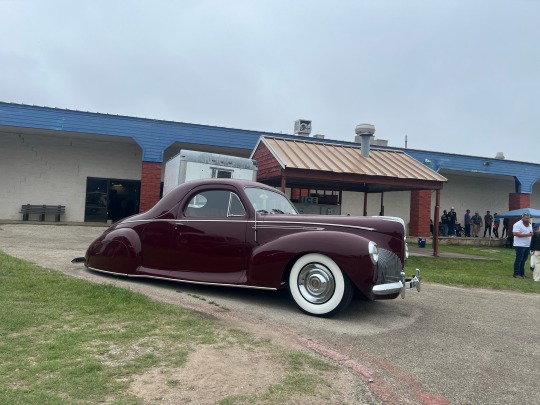


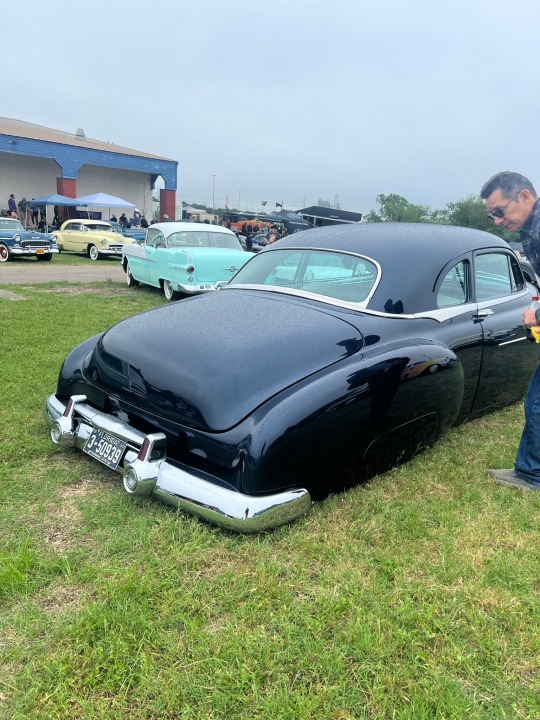


#classic car#vintage cars#custom car#antique car#kustom#praise the lowered#kustom kulture#taildragger#lonestarroundup#lone star round up#LSRU2024#custom cars#39 zephyr coupe#1939 zephyr#lincolnzephyr#50 chevy
10 notes
·
View notes
Text
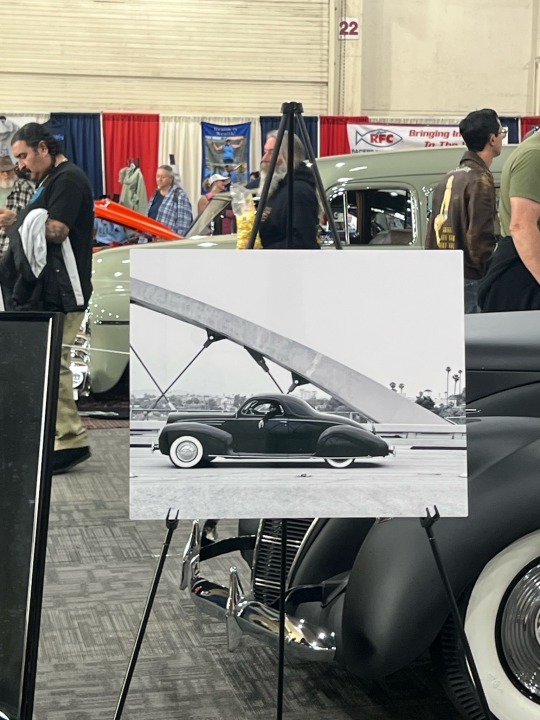
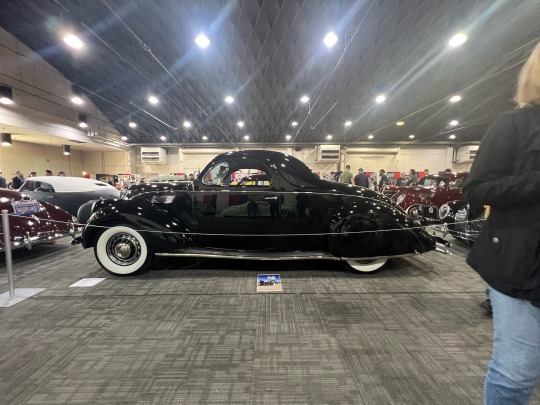

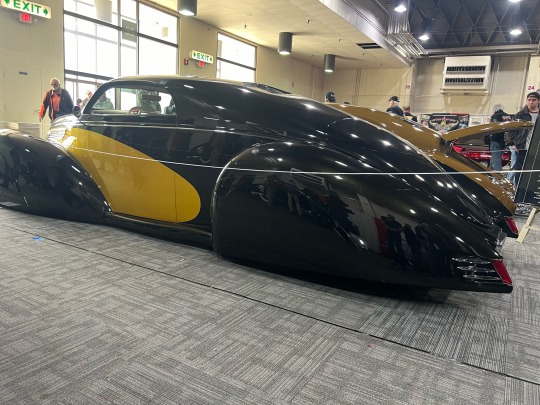
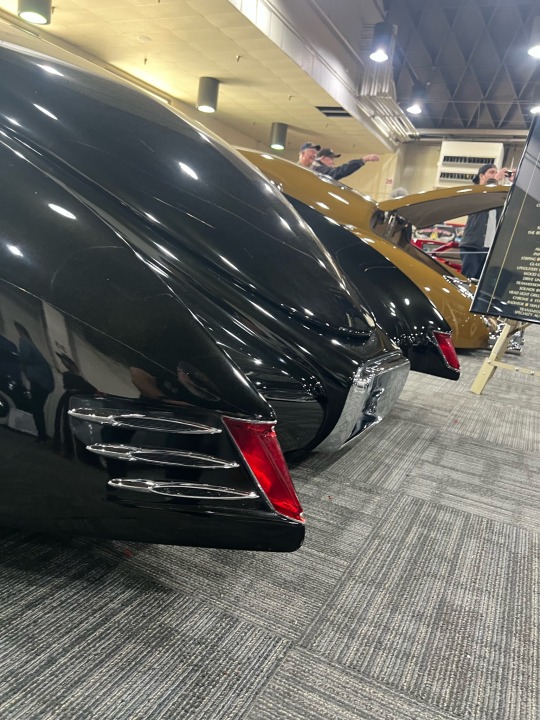
Last post of Zephyrs in Bldg 5 at GNRS 2024.
#classic car#vintage cars#custom car#antique car#kustom#praise the lowered#kustom kulture#1938 zephyr#1939 zephyr#1937 zephyr#39 zephyr coupe#lincoln zephyr#39 zephyr#zephyr#37zephyr#38zephyr#39zephyr#grand national roadster show#GNRS2024
13 notes
·
View notes
Text


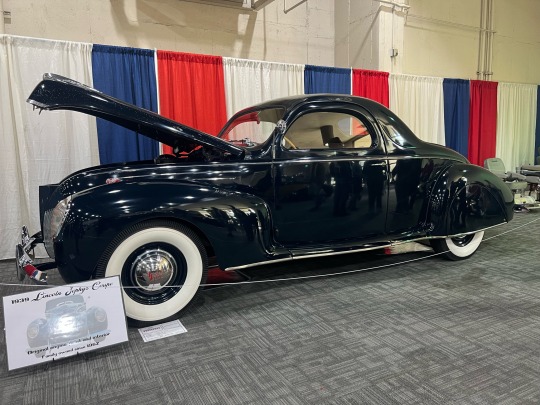
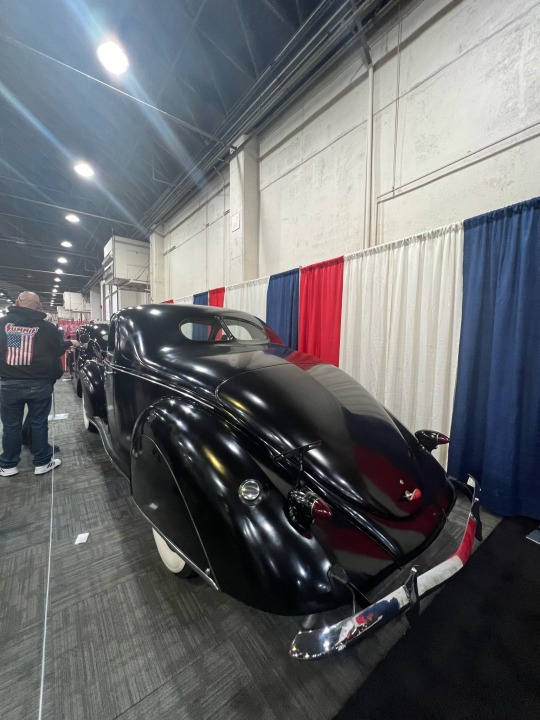
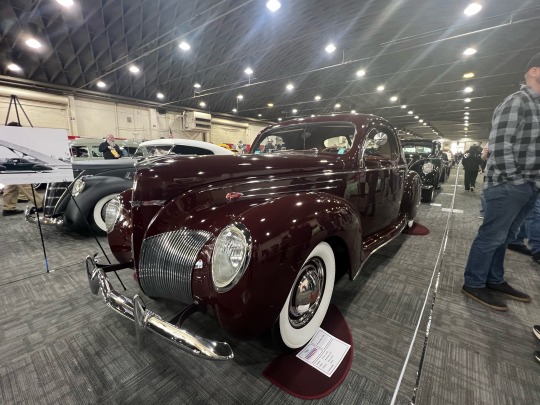
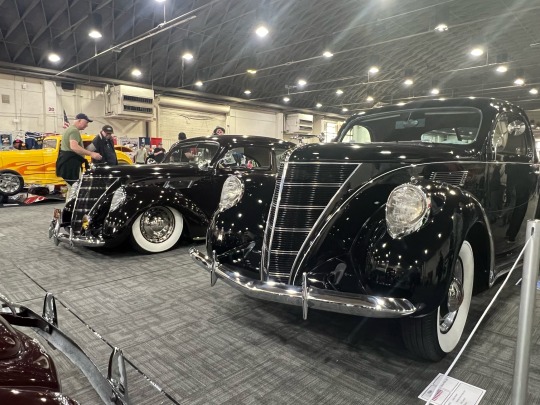



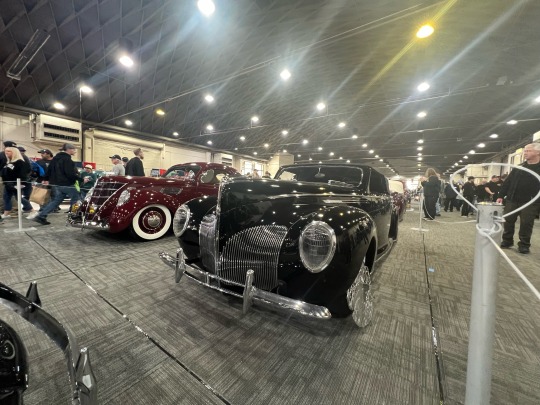
Few more Zephyrs from Bldg 5 at GNRS 2024.
#classic car#vintage cars#custom car#antique car#kustom#praise the lowered#kustom kulture#lincoln zephyr#1939lincolnzephyr#1939lincolnzephyrcoupe#1938zephyr#1937 zephyr#1939 zephyr#39zephyr#39 zephyr coupe#1938 zephyr#1939zephyr#grand national roadster show#GNRS2024
18 notes
·
View notes
Text
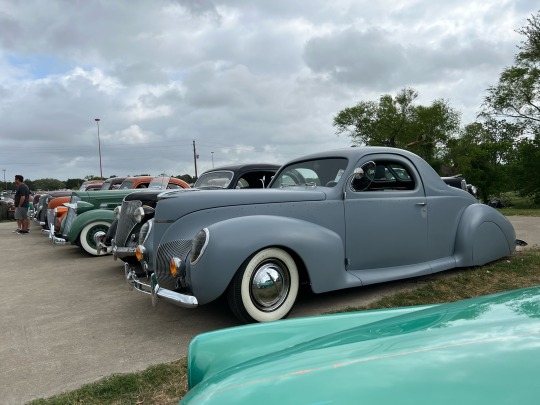
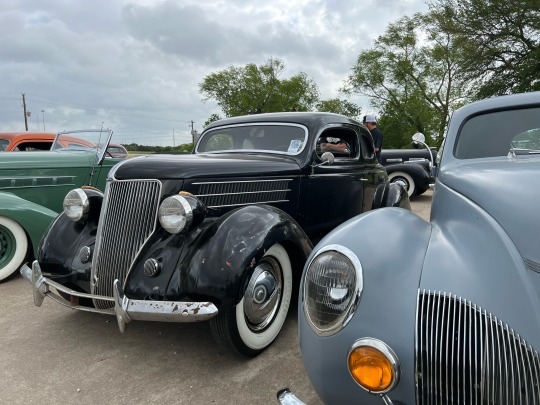




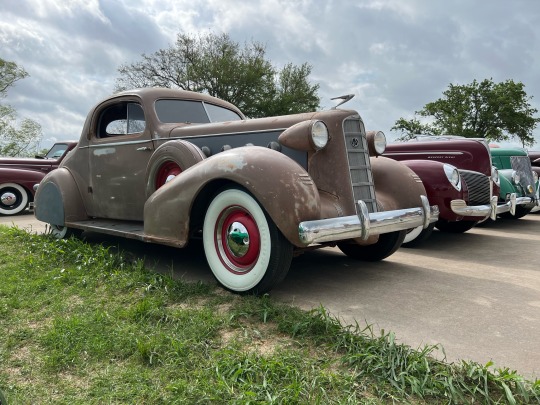

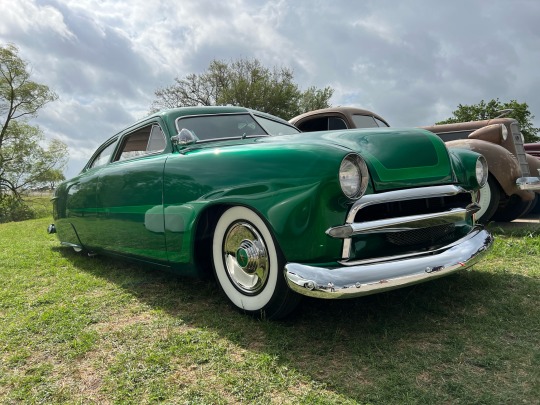

Los CoChinos LSRU 2022.
#los cochinos cc#loscochinos#lonestarroundup#2022#39 Zephyr Coupe#36 Ford 5 Window#36 Packard Roadster#40 Chevy Coupe#36 Olds Coupe#39 Mercury Coupe#36 Ford Roadster#35 La Salle Coupe#classic car#vintage cars#antique car#custom car#kustom#taildragger#praise the lowered#kustom kulture#prewar cars#austin texas#39 La Salle Coupe
104 notes
·
View notes
Text

Sept 2021
#classic car#vintage cars#kustom#antique car#custom car#kustom car#kustom kulture#praise the lowered#prewar#prewar cars#1939#1939lincolnzephyr#zephyr#los cochinos cc#loscochinos#taildragger#lincoln zephyr coupe#39 lincoln#lincoln zephyr#artdeco#streamline#streamline moderne
345 notes
·
View notes
Text
#1939#1939lincolnzephyr#39zephyr#39 lincoln#los cochinos cc#kustom#antique car#vintage cars#classic car#custom car#zephyr#loscochinos#taildragger#prewar cars#old cars#cars#hotrodlincoln#1939lincolnzephyrcoupe#39 coupe#kustom kulture#lincoln zephyr#los cochinos#kustom car
24 notes
·
View notes
Text

On the streets of Austin.
#1939#1939lincolnzephyr#39 zephyr#39 Lincoln#lincoln zephyr coupe#lincoln zephyr#classic car#kustom#los cochinos cc#vintage cars#car#old cars#loscochinos#antique car#custom car#taildragger#Texas
3 notes
·
View notes
Text

39 Lincoln Zephyr Coupe
#classic car#kustom kulture#vintage car#custom car#lincoln-zephyr#streamline#old hollywood#1939#1939LincolnZephyr#LosCoChinos#LosCoChinosTXKustoms#taildragger#kustom car#custom#kustom#car#zephyr#vintage cars#antique car#loscochinos#los cochinos cc
106 notes
·
View notes
Text
2019 Detroit Autorama Painless Performance/STREET RODDER Top 100 Winners
The 67th Annual Meguiar’s Detroit Autorama Presented by O’Reilly Auto Parts was, as always, a fantastic site for the Painless Performance/STREET RODDER Top 100 award program. The quality of cars at this event is as excellent as any show on earth, thanks to the high standards of the show’s most prestigious prize: the Ridler Award.
As the show judges examined the cars in Cobo Center, clipboards in one hand, flashlights in the other, searching for the details that would distinguish one vehicle as this year’s Ridler, we hiked the main floor and basement armed only with our cameras, our impeccable subjective taste, and a pocket full of window stickers to present to ten Top 100 winners. Here they are. Do you agree with our picks?
1931 Ford Model A Coupe
David Weinberg
Royal Oak, MI
Brothers Custom Automotive always brings something great to the Autorama Extreme portion of the event. Bill Jagenow and Autumn Riggle of Brothers said that David wanted “something bad ass.” The result is a chopped and channeled Model A coupe powered by an 8BA Flathead with Harrell heads, Navarro manifold, dual 97 carbs, and Lucky Speed Equipment air cleaners, ignited via a Roto Faze distributor. More details include E&J headlights, vintage brake backing plates, a late ’31 firewall, roll-down rear window, and green stained top wood matching the interior knobs. A ’39 Ford 3-speed toploader, torque tube, and Halibrand quick-change rear continue the traditional drivetrain. A ’36 Ford dash, leather bench, and boat steering wheel add to the interior.
1956 Pontiac Star Chief
Frank Howard
Venetia, PA
The Pontiac was a perfectly restored original car when Frank bought it, red and white and rust-free. Frank had a custom in mind and considered a taildragger, a sled, and some other variations. Working with Tim Kilkeary at Customs By Kilkeary in Eighty Four, Pennsylvania, the owner and builder came up with a version that features many upgrades, but retains much of the original character. Mild body mods include custom headlamps, tucked bumpers, and a slight 7/8-inch chop. Evod wheels add modern flavor. The Roadster Shop equipped the car with a Fast Track chassis. Power comes from a Don Hardy-built LS engine with a Whipple supercharger, all painted with a satin finish to match the convertible top. Inside is a full-leather custom interior.
1936 Ford Roadster
George Poteet
Collierville, TN
Winning the America’s Most Beautiful Roadster award in January made George Poteet’s ’36 roadster, built by Pinkees Rod Shop in Windsor, Colorado, ineligible for Ridler consideration, but not for a Top 100 pick. Eric Perratt and the Pinkees team modified the body from front to back, stretching the wheelbase, chopping the top, and fabricating a new hood, doors, and decklid (for starters). The one-off dash houses custom designed gauges with Classic Instruments workings. Eight-stack EFI feeds the 351 Windsor engine, dressed up with machined air boxes and valve covers. A TKO five-speed and Winters quick-change move power to the rear wheels, created by Mike Curtis. Look for Poteet’s amazing roadster on the cover of STREET RODDER later this year.
1963 Buick Riviera
Ray Rezner
Estero, FL
After finding the bone stock 98 percent rust-free raw material for the top-shelf custom Riviera project he wanted, Ray contacted Justin Nichols at Nichols Paint & Fab in Watseka, Illinois (featured on the television show “Wrench’d”). Justin got busy transforming the Buick from stocker to show stopper. The 1 1/2 –inch chop, front air dam and rear spoiler, and 20- and 22-inch Boze wheels add an aggressive appearance. The rear window was re-angled for a fastback look. The redone interior features a ’58 Thunderbird dash and seats. Leather extends into the engine compartment, covering the Borla air horns, radiator hose, and hood. The LS3 engine is paired with a pushbutton-shifted 4L70 transmission.
1933 Ford Speedster
Tim Irwin
Coopersville, MI
Mike Boerema of Gas Axe Garage impressed us with Tim Irwin’s “Lamont Special” speedster, an authentic ’30s style hot rod. The handbuilt body was extensively punched with louvers and fitted with an early Dodge truck grille. Nick Hardie added the lettering. The suspension is all 1933 Ford on a Model A frame. Vintage-style Firestone tires from Coker are mounted on 21-inch Model A wire wheels, stopped with mechanical brakes. The 1933 21-stud Flathead with a single Holley 94 is backed by a ’33 Ford 3-speed. A pleated leather-covered bench, F-1 steering wheel, and Stewart-Warner gauges fill the cockpit. The speedster was built as “something quick and fun to rip around in.” Tim participates in hill climbs and reliability run and is planning to attend The Race Of Gentlemen.
1956 Ford Fairlane Victoria
Tony Confalone
Massillon, OH
Tony has owned the Victoria since 1966, and Willard Adkins restored it more than 30 years ago. For the recent rebuild, Tony took it to Willard’s son, Wes Adkins at Wild Wes Paintworks & Hot Rod Factory. This time, the build included a custom frame with a rear 4-link and Ford 9-inch plus Detroit Speed X-Gen 535 frontend. Fat Mickey Tompson tires wrap around 18-inch Schott wheels. Dual TorqStorm superchargers with Holley Sniper EFI are added to the Ford Y-block, with custom valve covers and a fabricated oil bath style air cleaner to provide some old-school style. The interior is filled with custom Thunderbird-style seats, upholstered by Jeff Elwood. The ’56 Ford made an appearance at the 2018 SEMA Show prior to its trip to Detroit.
1932 Ford Phaeton
Roy & Donna Richardson
New Castle, DE
Brookville produced 32 two-door phaeton bodies, designed by Chip Foose. Gary Corkell of One Off Rod & Custom built number 3. After receiving a top chop, re-arched rear fenders, custom running boards, ’37 Cadillac headlights, and other exterior mods, the Hot Fudge and Easy Green body was dropped onto a Johnson’s Hot Rod Shop radius rod suspension with Posies leaf springs and RideTech shocks. Piecrust Coker tires wrap Wheelsmith spoke wheels. Paul Atkins upholstered the interior. Gary added a burl maple dash and floor mats. A knockout DeSoto Hemi is capped with six deuces with copper plated air horns. Roy and Donna are the new owners of the car, which debuted at the Grand National Roadster Show as a contender for America’s Most Beautiful Roadster.
1940 Willys Coupe
Buck Creek Ranch
Condon, MT
American Gasser Hot Rod Shop came to Detroit with two of it’s handcrafted steel-reinforced fiberglass Willys and one 1947 Thames. Blue Creek Ranch commissioned this LS3-powered Willys. The stunning black rod rides on a Heidts frontend with a triangulated 4-link locating the 9-inch rear, rolling on Schott wheels. Pro Auto Interior upholstered the custom leather interior, equipped with Recaro seats, a Nardi steering wheel on an ididit column, Vintage Air A/C, Classic Instruments gauges, and a Pioneer stereo. The engine is as well-dressed as the rest of the car, and is tied to a Tremec T56 transmission.Looking both elegant and ominous, the BCR Willys was built as a timeless classic that will be a driver as well as a family heirloom.
1927 Hupmobile
Bob Mermuys
Fenton, MI
Bob is a former vintage drag racer who wanted something different. A friend sold him the stock Hubmobile for a dollar and Pat Weiss in Holly, Michigan, built it as a street rod. The body is channeled over scratchbuilt one-inch tube framerails, and extends downward in back for the exhaust outlets and license plate cove. Roof wood was beautifully redone. The suicide frontend includes a ’34 Ford dropped axle and split wishbones. A 4-link rear locates a Ford 9-inch. E-T Wheels drag-style 15-inch wheels (Gassers in front and Five-Widows in the rear) continue the ’60s hot rod look. The race theme carries into the full custom interior from with custom seats. A Chrysler 354 Hemi is fed with a six-pack carb set-up. The Hupmobile was painted at Austin’s Body Shop in Holly.
1938 Lincoln Zephyr
Dave Jolly
Norval, ON, Canada
The Zephyr started life as a coupe. Making it a convertible is one of many modifications Dave made to the original steel body. Other mods include extended fenders, vertical grille bars, ’39 Zephyr headlights, ’37 running boards, chopped windshield, and a driver’s side suicide door. The paint colors are HOK black and Cypress Pearl. A custom tube frame stretches the wheelbase two inches; the IFS and 4-bar rear utilize ShockWave suspension parts. The Lincoln 460 engine runs Super Cobra Jet heads. The Demon carb is topped with a ’38 Zephyr hubcap air cleaner cover. The 16-inch custom wheels with ’37 hubcaps are wrapped in wide white Diamond Backs. Interior attractions include ’89 T-Bird seats covered in Scottish leather and a custom extended Zephyr console.
The post 2019 Detroit Autorama Painless Performance/STREET RODDER Top 100 Winners appeared first on Hot Rod Network.
from Hot Rod Network https://www.hotrod.com/articles/2019-detroit-autorama-painless-performancestreet-rodder-top-100-winners/
via IFTTT
0 notes
Text
Gasser Wars Veteran Del Wiesner Is Still Wheels-Up in His Olds-Powered 1933 Willys
In the early 1960s, Del Wiesner and Dean Seevers were a couple of guys from Loveland, Colorado, who built a ’33 Willys to drag race. It wasn’t long before they and another partner, fellow Loveland racer Harold Owens, found themselves in the thick of the Gasser Wars.
The trio spent several years on the circuit, towing their Olds-powered coupe all over the country to race the likes of Doug Cook, K.S. Pittman, Bones Balogh, George Montgomery, and other warriors of the era. Some weekends were spent match racing at local events, others put them in the national spotlight with fellow A/GS competitors in the NHRA. At their peak, e.t.’s were in the low 10s with trap speeds over 140 mph. In 1964, carrying 400 pounds of ballast to compete in B/Modified Gas, the Seevers/Wiesner/Owens Willys held the AHRA record at 136 mph.
Del Wiesner’s tribute to his Gasser Wars days is no static display. He built the new Seevers/Wiesner/Owens ’33 Willys to be legal for nostalgia racing. “About quickest that car has gone is 5.70 at 118 to 120 miles per hour in the eighth-mile.”
Fifty-plus years later, the Seevers/Wiesner/Owens A/Gas Supercharged ’33 Willys is still pleasing the crowds, albeit in an updated version. “People really love seeing the car. That’s what keeps me going,” Del says. “They love it because it has an Olds Rocket engine in it. That’s not something you see all the time, much less the original owner and driver in it.”
Asked about racing today, Del says, “I do still love it, but I look at it different now. I’ve been in some bad wrecks. I about wrecked this thing at a nostalgia event a year or so ago. I’d hate to wreck it now, so late in life. And I made a promise to my wife that I wouldn’t drive it so fast. So rather than running 8 seconds at 155, I’m content to go 115 in the eighth at 5.70, which is what it will run on a good track. That’s plenty of thrill for this old feller.”
Del will be 80 on his next birthday.
Pic: Bob D’Olivo
Comparing the tribute to this photo Bob D’Olivo took at the 1964 Winternationals illustrates how closely Del replicated his old Willys. Dean Seevers was driving here; Del drove at the 1964 NHRA Nationals and wheeled the car from then on.
1962
Dean Seevers had a “wild” ’39 Chevy coupe with a blown Olds motor that he drove on the street and raced at the drags as the 1960s dawned. Dean, Del, and Harold Owens were founding members of the local hot rod club, the Loveland Zephyrs, and part of a group of guys who raced in NHRA Division 5.
When they built the Willys, Dean and Del put in it a ’57 Olds mill with a 4-71 supercharger backed by a B&M Hydro. The Willys hit the track in 1962, running “around 120 in the 11s,” Del says. “We won a lot of trophies at all the tracks in Division 5.”
Harold mustered out of the Air Force a year later, and he wanted to join the team. He had an engine he wanted to build. “It was his baby motor, a ’49 Olds Rocket at 303 cubic inches,” says Del. When it was done, it displaced 308 inches and was fed by a 6-71 blower and Scott fuel injection. The “itty-bitty engine” put the Willys into B/Gas Supercharged.
Dean Seevers poses with his hot ’39 Chevy in the early 1960s. Olds powered, it ran hard at the strip.
“We went out to Pomona racing some of the biggest names in the country,” Del says of their trip to the 1963 Winternationals. The three friends from Loveland ran “131 miles per hour at 10.75, and we didn’t have to apologize to anyone for anything.”
What they did have to do, though, was be quicker. Doug Cook, running 10.60s, beat them in Pomona.
So in the winter of 1963, the Willys went on a diet. The steel front end was replaced with a liftoff fiberglass nose. The factory doors with their glass windows were pitched in favor of fiberglass doors with Plexiglas. Out, too, was the baby Olds. In went a 324-inch Olds motor bored and stroked to 396 ci. Lighter and more powerful, and with a new Dean Kennedy Hydro, the Willys showed “a dramatic improvement in e.t.,” remembers Del. Times dropped to the low 10s, and speeds increased to 140-145 mph. The Willys’ appearance in 1964, with the Seevers/Wiesner/Owens lettering and the assigned number 239, was the template for the tribute Willys, as that was the last year the trio raced as a team.
Dean and Del’s Willys in 1962, when a ’57 Olds engine earned them “a lot of trophies” in NHRA’s Division 5.
“Dean decided he wanted to build one of those Mark Williams dragsters, and he wanted to put his Olds in the dragster,” Del says. “So he went his separate way. That left Harold and me to run the Willys.”
By 1966, Del had moved on, too. He and Harold built a “super light” ’23 T roadster with an Olds capable of sending the car to 150-plus top-end speeds. But the car “nearly killed” him in a bad accident that ended his racing days.
“I still have the scars,” he says.
Pic: Randy Holt
At the 1963 Winternationals, the Seevers/Wiesner Willys beat the Mallicoat Bros. ’41 Willys in the first round of B/GS, but lost to Doug Cook in the next. They were using Harold Owens’ “baby” Olds mill.
2008
Scars, and memories, too. “I had two wonderful partners in this car back in the day. In 1964, we did the entire NHRA Division 5, in the points chase right up to the end. We ran every event: Omaha, Minneapolis, Great Bend, Continental Divide, Green Valley Raceway in Texas, Amarillo, plus the Winternationals in Pomona and the U.S. Nationals in Indianapolis. It wasn’t unusual for us to be in L.A., then Minneapolis, then Texas. We flat-towed this car all over the country until we finally got a trailer.”
Decades later, “I couldn’t shake the thrill the race car had given me. Even though I had quit racing long ago, I always loved the Willys gassers. Once you get that in your blood, it’s hard to let go. It was the most exciting time of my life, so I decided to rebuild a part of history.”
He considered another go-around with the original car. “I found the original ’33. Someone had converted it to a street machine with a Chevrolet engine. I called, but once they found out about the history of their car, they decided they didn’t want to sell it.”
The Willys went through major changes before the 1964 season. That’s Del lifting off the car’s new fiberglass nose in the pits at Pomona, and the little motor was replaced by a 396-inch Olds. Del called the improvements to the car’s performance “dramatic.”
He opted instead to build a Willys from scratch, with a fabricated chassis and cage, a fiberglass repop body, and the help of a young car builder named Bobby Anderson, who runs Sleds Customs in Apache Junction, Colorado. Bobby modified the frame for the Willys using 2×4 rectangular tubing, and mounted a straight front axle from Speedway Motors and a Ford 9-inch rearend. Within the 10-point polished cage are aluminum seats Bobby fabricated after the fiberglass racing seats Del bought for the project “were thrown in the junk pile,” Del says.
They weren’t the only pieces that didn’t pass muster. Much of the fiberglass Willys body Del bought was either “too heavy or poorly done,” so Bobby fashioned a rear decklid, dashboard, floors, fenderwells, and other parts from aluminum.
The engine had to be an Oldsmobile. “I have a number of blocks,” Del says, preferring those out of a ’62 Starfire. “The 394-inch Olds motors were made from 1959 to 1964, and the blocks from the ’62 Starfire have a unique configuration compared to the other engines. They have a wider main bearing boss, so you could run a heavier-duty main bearing. It’s the strongest 394 Olds block.”
Pic: Eric Rickman
Del remembers this round of the 1964 Winternats well. Dean went up against Bones Balogh driving Big John Mazmanian’s Willys. “We were out on Bones by three car lengths when we broke a rocker arm. We ran a 10.34, but Bones ran the first 9.99, at 151 miles per hour, in supercharged class history and beat us in the lights.”
Del built two different engine combinations for the Willys. One has a stock crank with steel billet Crower rods and 8:1 compression pistons. The other, his “quickest engine,” has 9:1 compression and aluminum rods. “I went to the aluminum rods so I could use a pinned rod bearing to keep the rod bearings in place. The steel rods had a tendency to tear the tangs off the ends of the rod caps. Pinned bearings eliminated that problem, but it means a trick crank situation. The crank is undersize 300-thousandths—that’s a lot—then resized to use Chevrolet main bearings. That’s a unique situation for an Olds to have that.”
As Gasser Wars veterans, Del and Howard were used to being courted by camshaft makers. “Several companies gave us camshafts back then.” Jack Engle ground cams for the SWO Willys, and 50 years later, Del again went to Jack, even after the cam maker had retired, for grinds for the tribute car. But with two engines in play, Del also uses a billet Isky 505-C roller cam in his other engine.
Dean left the team after the 1964 season, so the SWO Willys became the Wiesner/Owens car in 1965. Here Del is racing at Mickey Thompson’s invitational 200 MPH meet in Fontana. “We drew K.S. Pittman in the first round and got beat, but we were allowed to grudge race the other A/GS cars the rest of the evening between rounds of Top Fuel and A/GS. Our top time was a 10 flat e.t. at 146.69 miles per hour.”
“I like both cams,” he says. “Both those manufacturers treated us really well. The Engle definitely has more lift. It’s a more modern camshaft. The 505-C is like it was ground in 1960. I bought a pair of them unused at the Bakersfield swap meet. It has 100-thousandths less lift than the Engle, but I can make the car run just as hard for the first 300 to 400 feet as with the big cam. That’s what I do with the car, run hard out of the hole to give them the show.
“People come out to see cars drive up to the starting line and carry the front end for 100 feet. That’s the show, right there. I don’t run the car at top speed any more. These aren’t real stable at 150-plus.”
With some concessions to NHRA regulations, Del worked to keep the outside of the engine “looking like it was running the old stuff, nostalgia stuff.” Feeding the fire is a vintage Hilborn two-port fuel-injection system “that’s probably from the early 1960s,” says Del. Igniting the fire is a Joe Hunt Vertex magneto.
The start of the SWO tribute. Bobby Anderson fabricated the frame out of 2×4 rectangular tubing, “much stronger and less flexible” than the original Willys frame, says Del. The straight axle “is probably four times heavier than in the 1960s car, because we weren’t as concerned with weight as getting the right look for the new car.”
The headers, too, with their distinctive wraparound collectors, were built by Bobby to mimic the pipes on the SWO Willys. “At the time it was a convenient way to pull the tubes together, and it looked neat on the weed burners,” Del explains.
Another carryover from the original Willys is the tribute car’s shifter, which is on the column. “We always ran a column shifter on them, even though everyone else had it on the floor. In the old days we’d run a Powerglide shifter, a ’53 or ’54 column shifter, but you can’t race one of those anymore since there’s no reverse lockout on them.”
Del admits it “took a lot of work” to graft the B&M ratchet shifter onto the column. “It was a lot harder than putting it on the floor. Everything is handbuilt around the shifter.”
The Ford 9-inch is filled with 35-spline Moser axles, 4.56 gears, and a spool. The ladder bars here are mockups; the finished versions were machined from billet aluminum stock. “They’re probably 50, 52 inches long, go about halfway up to the front of the car,” Del says.
In the 1960s, the B&M Hydro was the transmission of choice for the SWO Willys as well as many of the other gasser teams. It wasn’t Del’s favorite, though. “I’m not a Hydramatic guy. We ran them back in the day, because that was the transmission to race. Everyone ran them until people started using the Chrysler TorqueFlites. But we had a lot of trouble with the Hydros. We lost races because of transmission problems.”
The tribute Willys, too, started with a Hydramatic, but Harold Owens had another idea. “Harold was running a Hughes Performance Powerglide in his dragster, and he recommended it. So I went with it. It matched up to the early Oldsmobile and works slick.”
The cage is certified to just an 8.50 e.t. “because of the way we built the bar in the driver’s side of the cage. It will hinge to let me in.”
Both of Del’s former partners are still around. “Dean Seevers, the top engine man and driver, is very ill, but Dean and Harold Owens are my biggest supporters of the car. When I started, I was the gopher guy, the polish guy. I painted the original A/Gas Supercharged car and kept it looking great. But then I started driving in mid-1964, so I got to run Doug Cook a number of times, Bones, K.S. Pittman, Chuck Finders, and the big-name racers.”
Re-creating the Willys that meant so much to him took a full five years. “It was a challenge, largely because all the parts we needed are now considered antiques.” But with Bobby Anderson’s help, Del now enjoys running and showing his tribute Willys for “all the past drivers, owners, and fans who truly loved these kinds of cars.”
The Willys being mocked up. During its construction, several body parts—the rear decklid, firewall, inner fenders—were “put on the junk pile” because they were either too heavy or poorly made, Del says. Bobby fabbed aluminum replacements for those parts.
The firewall and dash were among the pieces Bobby made from scratch for the Willys. “He’s quite a sheetmetal worker,” Del says of Bobby.
The engines Del uses in the Willys are ’62 Olds Starfire blocks bored 0.030 over and fitted with number 23 cylinder heads from 1963-1964 Olds 394s. Dave Sarno of SCH Racing Heads in Arvada, Colorado, “is my head guy,” Del says. “They aren’t ported or relieved as extremely as they were in the 1960s, since Dave says the extreme polishing we used to do doesn’t make that much difference. But deep pockets work.”
Topping the 6-71 blower is a two-port Hilborn injection system that Del modified to accept a four-port scoop. “I wanted more volume going to the injector,” he says. “The two-port scoop has considerably less frontal area than the four-port scoop.” So he fashioned an adapter to join the two.
Mad Mike the Striper out of Greeley, Colorado, lettered the original Willys. “When I rebuilt the car I contacted him. He’s still in business in Denver,” Del says. “He did a lot of signs and posters for the car, stuff like that, gratis.” Mike did not letter the new car, though. Del and Bobby took photos of the original Willys to a sign shop, “and he did the cutouts, like vinyl letters. But we didn’t want the lettering—we wanted what was left over, to use as a stencil to paint the lettering on the car.” Bobby then applied the graphics.
More of Bobby’s handiwork is found inside the Willys, where he fashioned the floors, the seats, the dashboard, the cage, and more.
The toughest part of the interior build was getting the B&M ratchet shifter up on the steering column, Del says. The eagle-eyed among you will spot two tachometers in the car, an original Sun tach in the dash and a new Auto Meter tach on the column. Del wanted “something bigger” than the Sun tach for racing. Plus, “I never had much luck getting a Sun tach to work with a magneto.”
“I got to know Marv Rifchin, from M&H Tire, late in life. I didn’t know him from the 1960s, but I got to know him later. He was such a gentleman, so that’s what I have on the car. That’s all I’ll run because of that.”
“Bobby [Anderson, right] did the painting on car. He does it all, the little sh*t. I knew him when he was just 4 years old. People ask, ‘Who did the work?’ That young guy, he did it. He does it all.”
“Sometimes the front end is off the ground, sometimes it’s rubbing against the wall. I never know which direction it’s going to go, but the crowd loves it.”
The post Gasser Wars Veteran Del Wiesner Is Still Wheels-Up in His Olds-Powered 1933 Willys appeared first on Hot Rod Network.
from Hot Rod Network https://www.hotrod.com/articles/gasser-wars-veteran-del-wiesner-still-wheels-olds-powered-1933-willys/
via IFTTT
0 notes
Text
Suede Palace, Model A Display and More Traditional Highlights from the 2019 Grand National Roadster Show
You’ve really got to go, if you haven’t yet. Inaugurated in 1950, the Grand National Roadster Show (touted as the longest continuously running hot rod show in the world) oozes with hot rod history. We should thank Al Slonaker and his wife Mary for creating this institution, originally held in Northern California. John Buck took over ownership in 2004, moving the three-day event farther south to Pomona. That first year in SoCal was a success with 300 vehicles put on exhibit.
Fast-forward 15 years. The 2019 GNRS gathered 500 eclectic cars set in seven buildings, plus another 500 outside (mainly on Saturday) as part of the Drive-In display. Many HRD readers started their visit with the Suede Palace, a hall devoted to traditional rods and customs. Across the way, Building No. 9 hosted Ford Model As in all their shapes and forms: antique hot rods, former GRNS winners, NHRA and SCTA record holders, and so on. It was a sight to behold, thanks to 80-plus vehicles tantalizing the crowd, and worthy of a story in its own right, which will appear in our July 2019 issue.
Stretching for more than an eighth-mile, Building No. 4 welcomed dozens of pros in the industry, as well as the highly anticipated exhibit of America’s Most Beautiful Roadster (AMBR) competitors, their owners vying to put their name on the 9-plus-foot-tall award. Fourteen cars entered the field, with George Poteet ultimately coming out on top with his 1936 Ford roadster (check out our May 2019 issue for further details). The name sounds familiar? George is the man behind the wheel of Speed Demon, the 450-plus-mph, piston-driven Bonneville record holder. And like many GNRS visitors, he lives and breathes hot rods.
Miret’s Morphine
Both hot rods and customs have shared the Suede Palace’s Best of Show award over the years. For 2019, a custom came out on top, specifically Morphine, a colorful 1950s-styled ’54 Chevy owned by Roger Miret. Punk music fans might recognize the name, as he’s the vocalist for the band Agnostic Front. Based on the East Coast, he is also one of the founders of the Rumblers Car Club.
Best Hot Rod
Saturday’s Suede Palace award ceremony celebrated Portland, Oregon’s Mike Collman, the winner of the Best Hot Rod trophy with his ’31 Ford Model A. We dig the 1960s show car influence of this suicide-doored coupe, from the angel hair surrounding it to the white interior and accents.
A Ford Trio
Behind that sextet of carbs, a trio of 1920s hot rod Fords: Reyes Rangle’s 390ci Cad-powered ’29, Vic Hager’s flathead-powered ’28, and Louis Stands’ ’27 Model T.
Survivor
Houston Percival unearthed quite a survivor: a ’30 Ford Tudor parked in a Winters, California, barn since 1952. While the body remains all stock, the nicely patina’d sedan runs a 239ci flathead bolted to a BorgWarner T5 gearbox for comfortable cruising speed.
Lakes Tribute
This great display pays homage to Al Jerauld and William Grosvenor, who raced the Jerauld’s Speed Equipment ’32 Ford at El Mirage dry lake. Incidentally, the photo on the board dates back to 1950. Bill Verhulst assembled a tribute to the 313C roadster, using a twin-carb’d flathead and a ’39 Ford transmission.
Searching
Current owner John Barnes is still searching for additional historical info about his three-window ’32 Ford. So far, it appears that the heavily chopped coupe had been drag raced in Pomona around 1951-1954 before being channeled and fitted with an aerodynamic nosepiece.
Tulsa Roadster
Designer and engineer Jackie Howerton teamed with builder Steve Moal to create the Howerton-Moal Tulsa Roadster for customer Bill Grimsley. The deeply channeled and Corvette-motivated ’32 Ford was a strong AMBR contender, looking excellent with Sid Chavers upholstery and shiny chrome pieces by Sherms Plating.
Tweety
Many had their eyes on Jim Govro’s channeled ’32 Ford roadster in the AMBR competition. Tweety Bird is a genuine survivor and was featured in HOT ROD, Nov. 1958. The Austin, Texas, resident created the car in 1951, though he ultimately contracted Rex Rod & Chassis to restore it in time for the GNRS, complete with a 331ci Cadillac V8 assembled by Keith Tardel.
Old and New
All the way from Tennessee, Ann and Andrew Bower joined the AMBR field with their topless ’32 Ford, built by Dan Kerbo at Kerbo’s Kustom Klassics. While the body is fresh from Brookville, most everything else remains vintage: Deuce frame, 276ci Mercury flathead, ’39 Ford Top Loader with Lincoln Zephyr gears, Halibrand quick-change, and so on.
Lena Mae
California tinkerer Ryan Rivers undoubtedly entered the most unusual vehicle in the AMBR battle, a 1924 Buick Model 24-Six-45 named Lena Mae. Under that antique appearance hides a bunch of interesting pieces, including a ’52 263ci Buick straight-eight hooked to a 700R4 transmission. And let’s not forget the 1923 Reo top chopped 8 inches. Rivers additionally crafted several of the car’s parts: radiator shell and trim, valve covers, dashboard, intake and exhaust manifolds, wheels, and more.
Most Beautiful
And the AMBR trophy goes to… George Poteet of Memphis and his ’36 Ford. The well-known collector, hot rodder, and Bonneville racer worked with Eric Peratt at Pinkee’s Rod Shop on this roadster and modified it with lengthened doors, recontoured front fenders, a stretched cockpit, and more. This ambitious project also required 350 CNC-machined custom components.
Model A Display
Building No. 9 celebrated Ford’s 1928-1931 offerings (aka Model As), including drag and lakes record holders, AMBR winners (eight of them), historic hot rods, custom cars, and traditional rods. Circle City Hot Rods helped Brett Miller build this ’31 Model A, fitted with a ’50 Ford flathead, a C4 transmission, and a ’36 Ford rearend. Pete Santini and Dennis Ricklefs applied the perfect paint and pinstripes, respectively.
Evolved
“Hot Rod Survivor” says the board. Indeed, this ’29 Model A was built in 1948 by Bill Coleman as a flathead-powered lakes racer and street roadster. It even reached 120 mph at El Mirage in 1949. The roadster evolved over the years, welcoming stock fenders and a 303ci Olds engine around 1955. A full restoration that included a Chevy small-block took place in 1978. Jim and Wendy Hartman have been the caretakers of the relic since 1999.
Elvis Co-Star
Tom Leonardo displayed his ’29 Model A, originally built by John Athan in 1937 using a $7 roadster body and a $5.50 Deuce chassis. It also participated in one of the last El Mirage races before WWII, where it ran 108 mph. Years later, it appeared in the movie Loving You, driven by a young Elvis Presley.
Tilt
Russ Meeks designed and built this Model A for John Corno between 1970 and 1972. That year, he won the AMBR competition, wowing the judges with a tilt body (lengthened 4 inches) that covered a ’68 Olds Toronado V8. More alterations came in 1986, such as the handbuilt stainless steel chassis. Oregon residents Roman and Judy Baszniak currently own the famous roadster.
Sport Coupe
Chip Starr of Portland, Oregon, is the proud caretaker of this time capsule, featured in Rod & Custom magazine back in July 1963. Then belonging to Robert and Richard Souza, the unusual ’29 sport coupe relied on a “warmed up” 286ci ’50 Merc V8 equipped with Edmunds heads, an Edelbrock triple-carb manifold, and a Joe Hunt magneto.
Four Ever
Clark Crump put his Model A coupe on exhibit in the Four Ever Four Cylinder Club booth. Bob Kehoe, a respected Bonneville 200 MPH Club member, owned the vehicle for years. He bought it as a stocker in 1998 before hopping up the four-banger with an overhead conversion.
Record A
Multiple lake racers sprinkled Building No. 9, such as the Holmes, Kugel & McGinnis ’29 A built in 1975. A 258ci twin-turbocharged and Hilborn fuel-injected SBC pushed the lakester to set the E-Blown Fuel Roadster record at 245 mph.
History Lesson
Also scattered throughout Building No. 9 were icons of hot rodding, three of which are visible in this one image: In the foreground is the Bill NieKamp roadster, which won the very first AMBR trophy. On the right edge of the frame is the Ala Kart, which won the AMBR twice in a row in 1958 and 1959 and sold millions of plastic model kits for AMT. Just visible in the back is Jim “Jake” Jacobs’ rolling collage of a tub.
Limelighter
The “village” outside the Suede Palace welcomed a group of handsome cars. Between the Packard sedan and the red ’41 Buick, check out Bud Millard’s Limelighter, a ’58 Chevy made by Bill Cushenberry for Frank Gould. It won Best Custom at the 1964 Winternationals. Oz’s Kustoms restored the chopped coupe to its former glory.
Fresh
Less than a week before the GNRS, Eric Justus’ Deuce was still in a thousand pieces, the paint barely dry on the (real) body. The latter came from an older “smoothy” street rod project; but Justus and his friends brought it back to 1932 specs, even redrilling holes where the factory put them. We plan to feature the car in Hot Rod Deluxe in the future.
Untouched
This Olds-powered three-window Deuce had a ton of people talking, for good reason. It has remained untouched since Julian Alvarez bought it in 1973. He found it in Huntington Beach, California, where it had been parked for 10 years. It retains all its early 1960s hot rod attributes: metallic paint over a chopped top, louvers, chromed steel wheels, and so on.
Rocket
The majority of the vendors invaded the large Building No. 4. Ross Racing Engines displayed Bob Gratton’s five-window ’32 Ford built by Hilton Hot Rods. Lack of a hood allowed the crowd to admire the supercharged Olds Rocket V8 assembled by Ross.
Bare Ford
Artist Coby Gewertz designed his ’34 Ford with Tim Conder before entrusting South City Rod & Custom with the construction. Notice the altered front fenders and seriously set-back 331ci Chrysler Hemi. Gewertz got the Halibrand magnesium wheels from his dad, an ex–Funny Car racer.
Forty Custom
Neat ’40 Buick, eh? Owned by Steve Pierce, the coupe features a ton of custom alterations: ’39 Ford headlights, modified hood, chopped top (4 inches in front and 5.5 in back), molded rear fenders, ’41 Cadillac bumpers, and rare Lyon hubcaps that nicely complement the Washington Blue paint.
Kandy Devil
The GNRS brings enthusiasts from all over the world. Tristan Louwaars of Tristan Kustomizing, Holland, poses proudly with the Kandy Devil, an SBC-powered ’53 Chevy he built for Vincent Wolfs (of Belgium). Their adventure proved a bit stressful, as the car only cleared U.S. Customs the day before the show opened!
Tribute Poncho
Now the property of John D’Agostino, the ex–Richard Zocchi chopped ’62 Pontiac looked its best in Building No. 5, which was dedicated to custom cars. Zocchi built the 389-powered Grand Prix in 2002 as a tribute to an identical model (restyled by Gene Winfield) he owned in 1962.
Swoopy
Glenn McElroy’s Speedliner took inspiration from the renowned Norman E. Timbs Buick, which was destroyed in Malibu’s wildfires last November. Marcel and Luc Deley’s talented hands crafted the swoopy aluminum body on McElroy’s rear-engine two-seater.
Mooney
Based on a ’25 Ford roadster, the Mooney-Simpkins Special was built in 1949 by Fay Mooney Sr. of Bakersfield, California, a year before winning its class at the Oakland Roadster Show. Motivated by a 270ci GMC engine, the dirt track racer also appeared in HOT ROD, Jan. 1950. Paul Mooney has taken ownership.
The post Suede Palace, Model A Display and More Traditional Highlights from the 2019 Grand National Roadster Show appeared first on Hot Rod Network.
from Hot Rod Network https://www.hotrod.com/articles/suede-palace-model-display-traditional-highlights-2019-grand-national-roadster-show/
via IFTTT
0 notes
